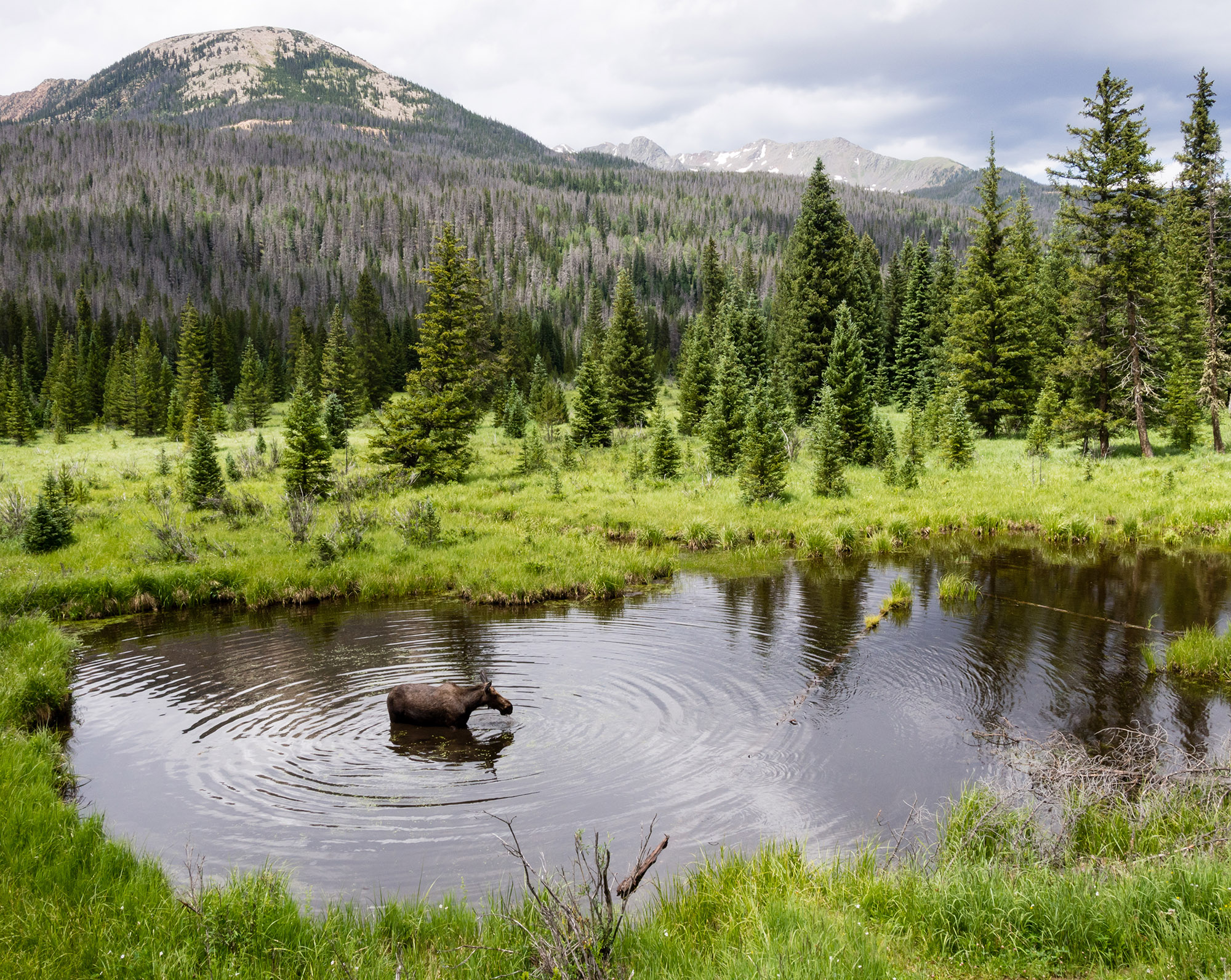Many states across the country have declining moose populations, particularly in the East. New Hampshire is down 40 percent since 2014, Vermont is down 50 percent since 2005, and Minnesota’s population has fallen 58 percent between 2006 and 2017. (Wildlife managers have blamed heat, ticks, and brainworms, among other factors.) But out West, Colorado is bucking this trend. In fact, moose numbers in Colorado are so high that the big critters are actually causing the decline of other natural resources.
“It’s important to use hunting, especially harvesting cows so we don’t damage the willows and aspens,” Andy Holland, Colorado Parks and Wildlife statewide big game manager told Coloradoan. “Moose will go gangbusters, rapidly increasing. We want to keep them at objective numbers so they don’t exhaust the resource and crash. Nobody wants that.”
Of top concern is what’s going on with wetlands in Rocky Mountain National Park, which make up just four percent of the park but contain key willow habitat that also serves as forage for moose and elk. Willows comprise more than 90 percent of a moose’s summer diet, and with the moose population inside the park growing at about 5 percent year over year, wildlife managers are worried the willows that do exist will be short lived.
Moose eat up to 45 pounds of willow a day. By comparison, elk eat three pounds a day. The Kawuneeche Valley, where the first park moose was seen in 1980, has lost 77 percent of its willow acreage since 1999 and 94 percent of its beaver pond surface water since 1953. That’s why a wetland restoration effort started in 2020, and its goal is to reduce browsing pressure by deer, elk and now a growing number of moose, too.
“We know we have heavily degraded wetlands and a long history of too many elk on winter range on the east side of the park that is reducing willows,” Will Deacy, Rocky Mountain National Park large mammal ecologist, told the Coloradoan. “We strongly suspect moose are exacerbating that, which is making restoration of our wetlands difficult.”
The last official moose survey in the park was conducted in 2020, and it showed a total of 145 moose, although 35 percent of the park wasn’t surveyed. Hunting is prohibited inside Rocky Mountain National Park, and managing the herd through harvest usually to happen outside the park. In the past, however, RMNP has conducted elk culls with “authorized agents, including qualified volunteers” to help reduce their impact on vegetation.
Colorado’s moose hunter success has ranged between 70 and 80 percent in recent years, with the population growing even as the number of tags issued increases. In 2019, Colorado Parks and Wildlife issued 380 moose tags statewide, and estimated a post-hunt population of 2,910 moose. In 2023, the last year numbers were available, CPW had issued 645 tags and reported a post-hunt population of 3,470 animals.
State wildlife managers started bouncing around the idea of reintroducing moose in the 1950s. Similar to Colorado’s current challenges with wolf reintroduction, many locals, especially ranchers, didn’t want moose back then either. The state eventually introduced a dozen moose a year for two years in 1978 and 1979 west of the national park’s boundary. The intention was to improve wildlife watching and hunting in an area called North Park.
By 1980, a moose was spotted inside Rocky Mountain National Park boundaries. The first in possibly several decades and the last for the next three decades, but that’s not the case in this decade. They’re becoming a daily spectacle in the national park.
Read Next: A Widowed Homesteader Learns to Hunt Moose, or Die Trying
An estimated 670 moose occupy the original transplant area, North Park. It’s the second largest herd in the state following behind Grand Mesa which hosts 840 moose, with well over 3,000 animals statewide. Colorado continued to bring in moose from Wyoming and Utah as recently as 2010.
